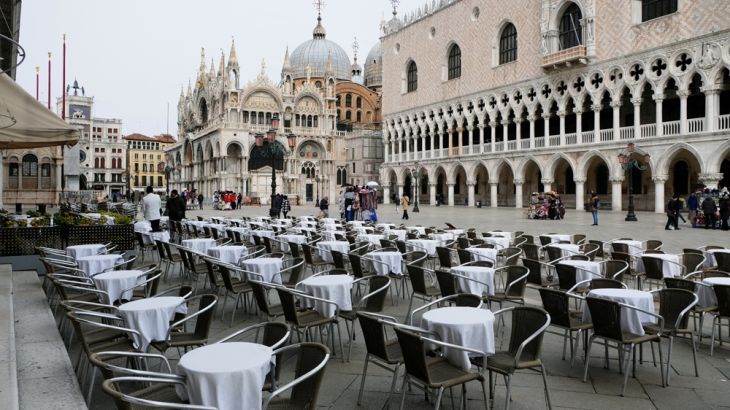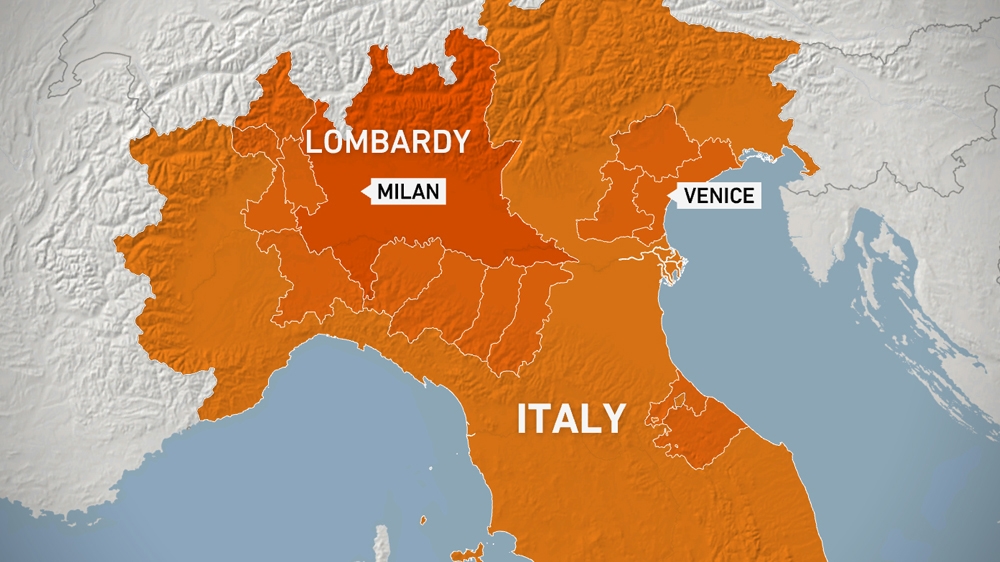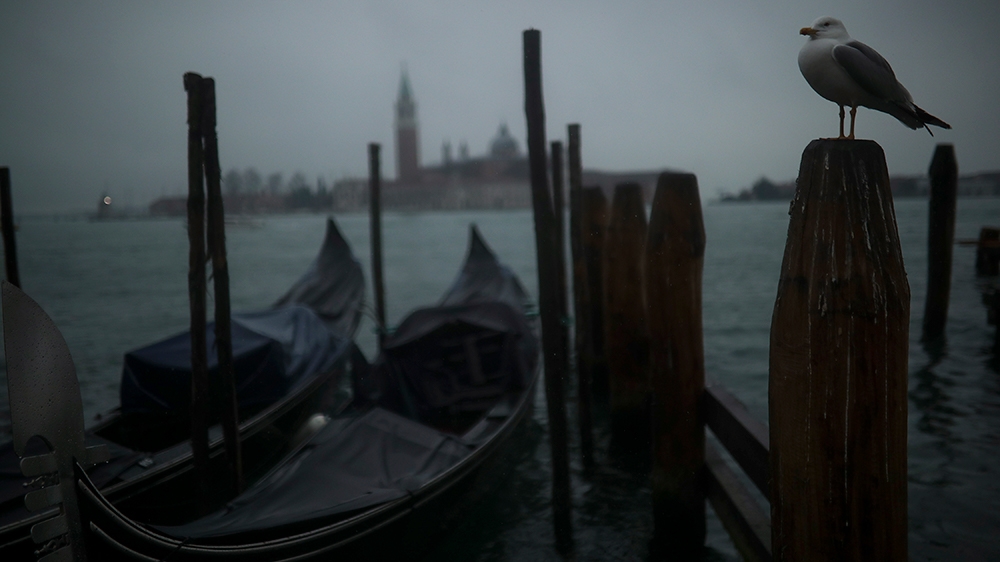Italy quarantines 16 million people over coronavirus fears
In a drastic attempt to curb the epidemic, Italy limits the movement of a quarter of its population until April 3.

Rome, Italy – Italian Prime Minister Giuseppe Conte has ordered the lockdown of the country’s northern region of Lombardy and 14 nearby provinces in an attempt to halt the spread of the coronavirus.
The move, announced on Saturday, places some 16 million people in the new “red zones” until April 3.
Keep reading
list of 3 itemsWhat we know so far about coronavirus
Coronavirus: All you need to know about symptoms and risks
“We understand that these measures will require sacrifices, but this is … self-responsibility,” Conte said in a news conference on Sunday.
The drastic move comes after tests revealed a big increase in the number of coronavirus infections. In its daily update, Italy’s civil protection agency said on Saturday that the number of infected people rose by 1,247, bringing the total to 5,883.
Among those infected is the head of the co-ruling Democratic Party, Nicola Zingaretti.

In addition to Lombardy, the quarantine area has been extended to the provinces of Modena, Parma, Piacenza, Reggio Emilia, Rimini, Pesaro e Urbino, Venezia, Padova, Treviso, Asti, Vercelli, Novara, Verbano Cusio Ossola and Alessandria.
The government’s decision restricts all movements in the quarantined area. Police forces will patrol the roads in these provinces.
Those who enter or exit the region without a significant, “not deferrable”, work reason or a health emergency will be fined.
“This is not a ban on any movement, but citizens will have to justify them,” Conte said.
Museums are closed and any civil ceremonies, including funerals, are suspended. Bars and pubs that can guarantee a distance of one metre (3.3 feet) between customers can open but must close their doors at 6pm.
Gyms, swimming pools, theatres and betting shops will close, and athletes will have to train indoors with no crowds around.
“We must act to avoid the spread of the infection and the overload of our health system,” Conte said.
In recent days, concerns have been raised over the availability of intensive care for the most vulnerable affected patients.

Running out of space
On Friday, the association of medical directors (ANAAO) sounded the alarm over a lack of intensive care beds in Lombardy hospitals.
Almost 95 percent of those wards are full, the organisation added.
“We foresee 18,000 patients admitted to hospitals by March 26. Around 2,700 to 3,200 of these will require intensive care,” Antonio Pesenti, coordinator of intensive care units in Lombardy, told the Corriere della Sera newspaper.
“Today, we already have over 1,000 patients in intensive care or whose condition can get worse at any time.”
Regional authorities have accepted the prime minister’s decision sceptically.
“It goes in the right direction, but I must underline that it looks quite messy,” said Lombardy Governor Attilio Fontana of the right-wing League party.
Luca Zaia, another League leader and president of the Veneto region, which includes Venice and other cities in the “red zone”, has fiercely opposed the decree, considering it “excessive”.
“We are dealing with some limited clusters that don’t affect the overall general population, so I cannot understand the reason behind such a disproportionate action,” Zaia wrote on Facebook.
Carlo Calenda, head of the liberal Action party, believes the real problem lay in the vagueness of the orders.
“It’s impossible to adopt them. Do you block the roads with the army?” he tweeted early in the morning.

Leaked order
A draft of the government order had been leaked to the press and circulated widely on Saturday night, prompting a rush to leave the red-zone areas.
La Repubblica newspaper reported that, in Milan, about 500 people dashed to the train stations, trying to take the last trains out.
“That’s crazy. A severe decree is leaked, people panic and try to escape a hypothetical red zone, taking the infection with them. In the end, the only effect is to help the spread of the virus,” virologist Roberto Burioni tweeted on Saturday night.
Conte criticised the leak of the unsigned draft, saying it created “uncertainty and confusion”.
“I think this drastic measure was necessary,” Federico Iaccarino, a 33-year-old electronic engineer from Naples who lives in Milan, told Al Jazeera.
“These days people go skiing or travel to the lakeside. Yesterday, people crowded the bars on Sempione Street. They didn’t understand how serious the situation was.”

Unclear economic consequences
The quarantine will take over the Italian economic zones. About a third of the national gross domestic product (GDP) comes from the regions of Lombardy and Veneto.
According to the financial service company Moody’s, Italy’s GDP will decrease by 0.5 percent this year.
“When considering the purchase of durable goods, most people will wait and see what happens, and this has a potential recessive effect on the economy,” Francesco Daveri, professor of Macroeconomics Practice at Bocconi University, told Al Jazeera.
The real impact of the lockdown will mostly depend on the definition of “not deferrable activity”.
“Is the delivery of industrial goods deferrable or not? What if you missed an important one and your business went bankrupt? These are all aspects that are needed to be clarified,” said Daveri. “I fear that in the end, everything will depend on our civic sense.”